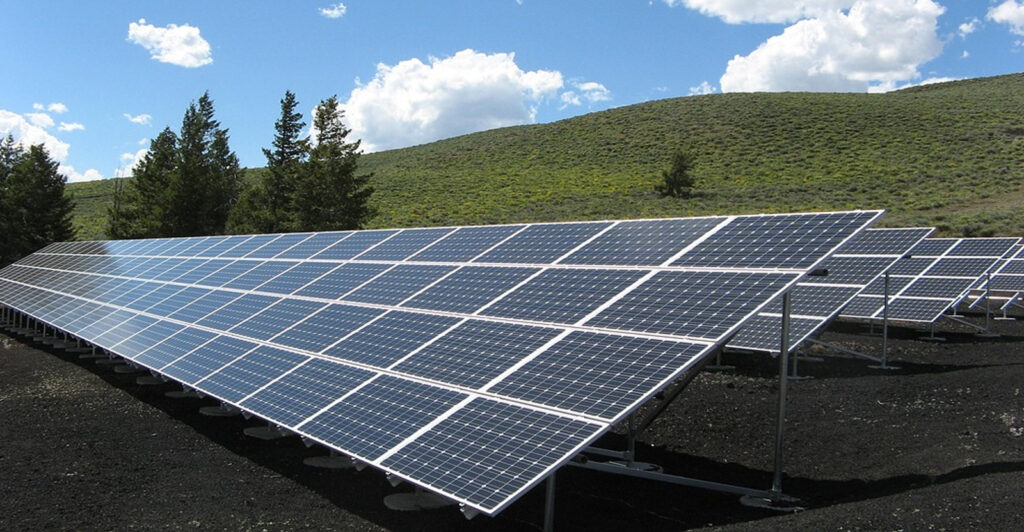Bifacial solar modules and double glass bifacial solar modules are both types of solar panels designed to capture sunlight from both sides (front and back) to generate electricity.
- Basic Bifacial Module:
- A basic bifacial module typically consists of a front-side photovoltaic (PV) layer and a back-side PV layer, with no glass covering on either side. It captures sunlight on both the front and back surfaces.
- The back-side PV layer is often installed slightly above the ground or on a reflective surface (such as white gravel) to maximize reflected sunlight.
- Basic bifacial modules are typically framed and installed in the same manner as traditional monofacial modules with the front side facing the sun.
- Double Glass Bifacial Module:
- A double glass bifacial module is similar to a basic bifacial module but with a key difference: it has glass on both the front and back sides. This means that the entire module is enclosed in glass.
- The front glass layer is designed to capture sunlight as it does in a traditional monofacial module, while the back glass layer allows for the reflection of sunlight onto the rear-side PV cells.
- Double glass bifacial modules are typically frameless and can be installed with both sides exposed to sunlight.
Key differences between the two include:
- Encapsulation: Double glass bifacial modules are fully encapsulated in glass on both sides, providing better protection against environmental factors like moisture, dust, and corrosion. Basic bifacial modules usually have a non-glass back layer that may be more exposed.
- Installation: Double glass bifacial modules are typically frameless and can be installed without a traditional frame, which simplifies installation and reduces shading. Basic bifacial modules are often installed with a frame, which can create shading on the rear side.
- Durability: Double glass bifacial modules tend to be more durable due to their glass encapsulation. They can withstand harsh environmental conditions better than basic bifacial modules with exposed backsides.
- Efficiency: Double glass bifacial modules may have slightly higher front-side efficiency due to the added front glass layer, which can capture more direct sunlight. Basic bifacial modules may have a slight efficiency advantage on the rear side due to better reflection when installed above a reflective surface.
In summary, the primary difference between a bifacial module and a double glass bifacial module is the presence of glass on both sides in the latter, which provides improved durability and potential front-side efficiency advantages. The choice between the two depends on factors like installation method, environmental conditions, and desired performance characteristics.


